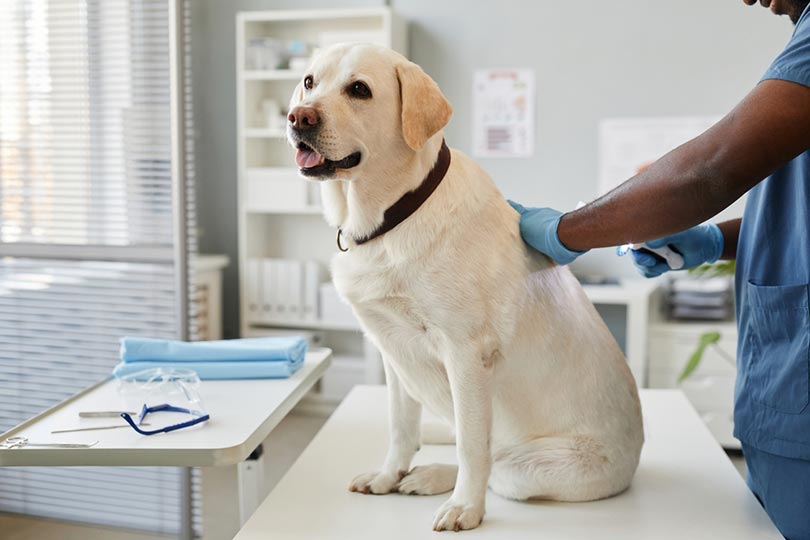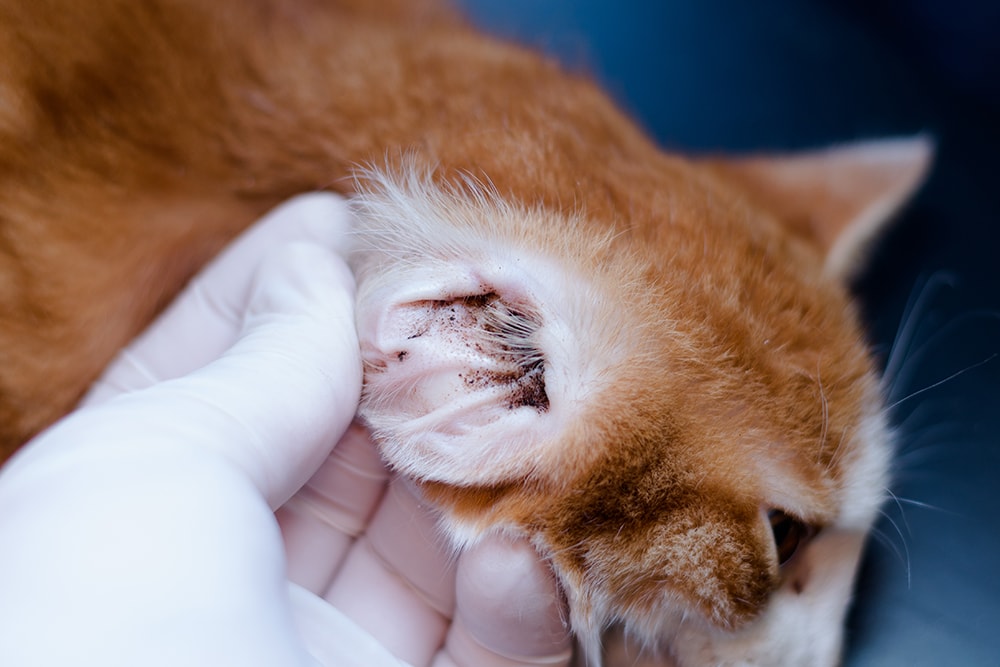Malocclusions in Dogs (Teeth Misalignment): Vet Explained Causes, Signs & Care
Updated on
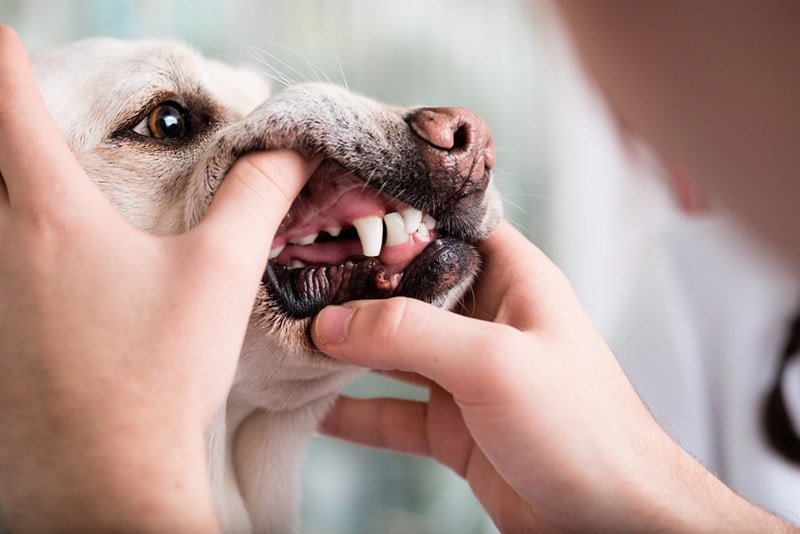
Click to Skip Ahead
For people with misaligned teeth, orthodontic correction is pursued readily if affordable, even if the change is cosmetic in nature only. In dogs, it’s a little different. You may not know that we can place things like braces in dogs, but how do we ethically decide to put a dog through a procedure?
The answer is that we only do so if the misalignment of a dog’s teeth is causing a functional problem such as pain. To determine this, though, we must know a lot about how the teeth should align, how likely changes in each dog are to cause a problem, and how to recognize if one is already present.
The first step in that process starts with what a dog owner can observe at home, so hopefully, this guide will help you learn all about what normal and abnormal dentition in a dog looks like and what might need to be done about it.
What Does Proper Occlusion Look Like in Dogs?
Occlusion refers to how the teeth of the upper and lower jaw meet when the mouth is closed.
Dogs under 6 months of age with proper occlusion have three incisors on each side of each jaw, one canine on each side of each jaw, and three premolars on each side of each jaw, for a total of 28 teeth.
Dogs over 6 months of age with proper occlusion have three incisors on each side of each jaw, one canine on each side of each jaw, four premolars on each side of each jaw, and two upper molars on each side and three lower molars on each side, for a total of 42 teeth.
In dogs of all ages, the upper incisors should sit just a bit more forward towards the nose than the lower incisors, the lower canines should sit in front of the upper canines, the tips of the premolars of the upper and lower jaws should fit between the space of the teeth of the opposite jaw, looking like a zigzag, and the last premolar and molars of the upper jaw should sit just outside of the corresponding lower jaw teeth. The mouth should be able to close fully without running into the roof of the mouth, resting outside the lips, or causing pain.
Some dog breeds have normal, abnormal occlusion, in that their abnormal occlusion is considered standard for the breed. Examples of these breeds would mostly be brachycephalic dogs with short muzzles, such as bulldogs, Boxers, Shih-Tzus, Pekingese, Pugs, and Boston Terriers.
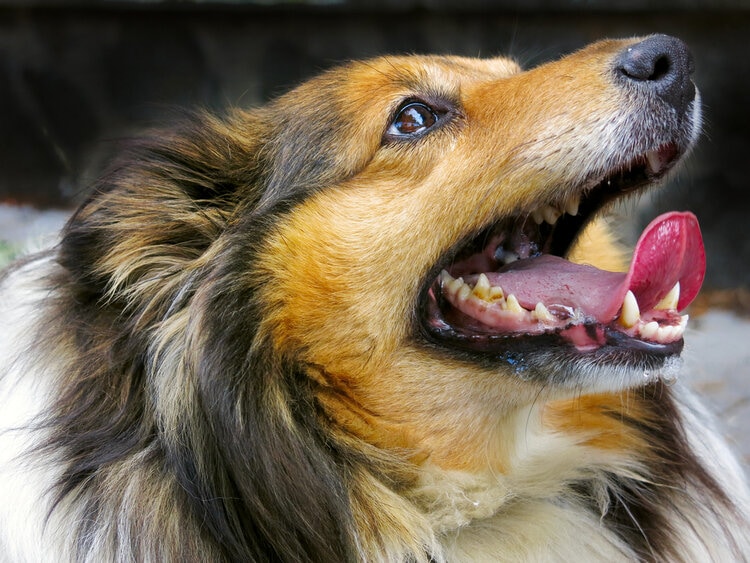
What Is Malocclusion in Dogs?
Malocclusion is the abnormal alignment of teeth when a dog closes their mouth. In dogs, there are four types of malocclusions, and they are partially based on the difference between dental and skeletal-based malocclusions.
Dental malocclusions are ones in which the bone structure of the jaws is normal, but the teeth themselves point or rotate in an abnormal direction.
Skeletal malocclusions are ones in which the length or shape of the upper and or lower jaw are abnormal, leading the teeth to be misaligned.
Malocclusions are broken down into four classes:
| Class 1: |
These are dental malocclusions meaning it is just the teeth themselves that are in an abnormal position. It may be one or more teeth and may describe teeth that jut or rotate in any direction, with different medical terms for each.
|
| Class 2: |
Also known as overbites, class 2 malocclusions are skeletal malocclusions in which the upper jaw protrudes further forward than it should. This can be due to a long upper jaw or short lower jaw.
|
| Class 3: |
Also known as underbites, class 3 malocclusions are skeletal malocclusions in which the lower jaw protrudes further forward than it should. This can be due to a short upper jaw or a long lower jaw.
|
| Class 4: |
Class 4 is also known as a wry bite. It describes when the abnormality leads to a change in direction to the side, or laterally, often meaning the changes affect only one side, left or right, or in a plane from front to back. For these, imagine a diagonal tilt in any direction to describe what is different in the jaw.
|
Most dogs with a malocclusion will actually have more than one type at the same time.
What Are the Signs of Malocclusion in Dogs?
Class 1 malocclusions often have no outward signs of a problem besides noting that the alignment of the teeth is incorrect. These may only be seen during a physical examination at the vet.
The other malocclusions or severe cases of class 1 may lead to dogs that cannot close their mouth and/or have teeth that stick out past their lips. They may drop food when chewing, take longer than normal to chew, fail to eat certain foods entirely, and therefore may be underweight or gain weight more slowly than usual.
Some dogs may have bad breath and a history of dental and gingival disease. Ulcers and bleeding of the roof of the mouth or lips may be seen. Dental infections and nasal discharge can develop.
Some dogs may show signs of pain such as crying out, hesitating to open or close their mouth, head shaking, rubbing or scratching their face and mouth, or twitching or spasming jaw muscles.
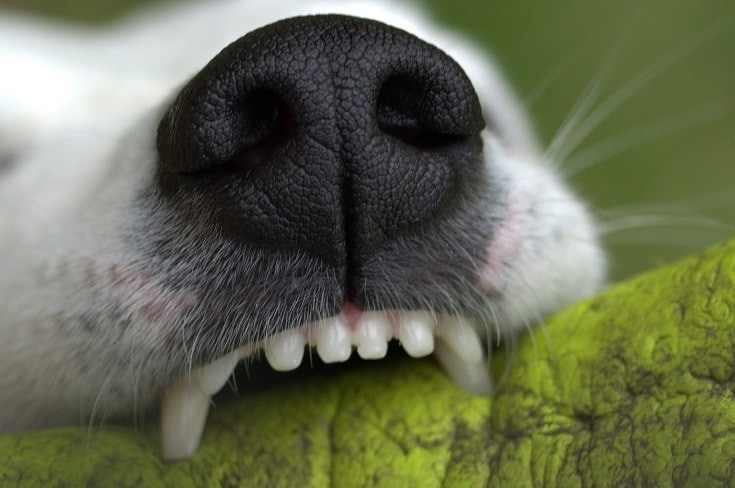
What Are the Causes of Malocclusion in Dogs?
For the most part, genetics are the cause of malocclusion in dogs. Certain malocclusions run in certain breeds, like brachycephalic dogs or Yorkshire Terriers failing to lose their baby teeth. Misaligned baby teeth often lead to misaligned permanent teeth.
Beyond genetics, trauma can also cause malocclusions. Certain medicines, toxins, or diseases in pregnant dogs or newborn puppies can also lead to malocclusions.
How Are Malocclusions in Dogs Diagnosed?
A thorough physical exam is usually enough to diagnose a malocclusion, including classifying it. Sometimes dental X-rays can also help with this. Models of dogs’ teeth or imprints/impressions can also be made to better understand how the alignment of all their teeth relates to one another.
How Are Malocclusions in Dogs Treated?
Treatment depends on the type of malocclusion. Not all malocclusions require treatment. In most cases, malocclusions are only treated if they’re causing a problem. How well a dog can allow for proper maintenance of any orthodontics is an important part of the decision to treat.
Therapy for malocclusions in dogs is broken into three types: preventative, interceptive, and corrective.
Preventative therapy aims to identify in young animals abnormalities with teeth that are likely to later lead to malocclusion and intervene to prevent this. The classic example is removing retained deciduous (baby) teeth in 6 months or older dogs. If these baby teeth remain while the adult teeth come in, this leads to a high likelihood of misaligned teeth and dental disease.
Interceptive therapy removes or repositions misaligned baby teeth in the hopes of keeping the malocclusion from progressing to the adult teeth when they erupt. In class 1, malocclusions of baby teeth, such as incisors that point inwards instead of out, therapy can be as simple as providing regular chewing on balls to help push the teeth forward again. These less invasive treatments are called passive therapies. You can think of this as a specific form of preventative therapy.
Corrective falls under the heading of orthodontics, like braces. This moves malaligned teeth into place through a combination of removing teeth and applying pressure on teeth in a certain direction, as needed. This part of the intervention is known as active treatment, which is followed by a second phase known as retention, which aims to keep the teeth in the position they were moved into.
Just like in people, this is often accomplished with retainers, though dog retainers are usually permanent. In some cases, allowing the tooth to fit into its normal position in the dog’s dental alignment may be enough to keep it in place.
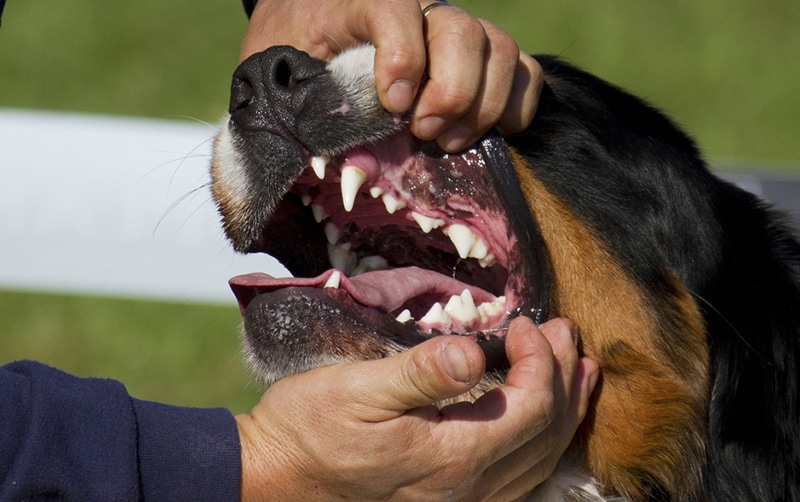
How Do I Care for a Dog With Misaligned Teeth?
Any dogs with corrective orthodontics need to be fed wet food. Careful cleaning and inspection of their orthodontics is a daily task and includes learning to watch for signs of cuts or ulcerations caused by the equipment. Chewing on toys is usually also not allowable while corrective orthodontics is in place.
Dogs that have any teeth removed will need the incision monitored and will also need to eat wet food for about two weeks.
If you know your dog has a malocclusion but no treatment is being pursued, it is best to keep a close eye out for signs of dental disease, watch their weight, and monitor how they do with eating and chewing as signs of a problem may develop later. Remember that dogs with malocclusions are prone to higher rates of dental disease and usually need regular dental cleanings to avoid problems.
Frequently Asked Questions (FAQs)
How much does it cost to fix malocclusions in dogs?
Dogs that require corrective procedures for their malocclusions usually need to see a specialist (veterinary dentist), and the cost can be as little as a few hundred up to over $10,000, depending on the procedure(s) needed and the location of the pet.
Is malocclusion painful?
Malocclusions are not always painful, but the pain can be extreme in specific cases. Sometimes that pain is felt at rest; other times, it’s specific during active use, such as chewing.
Conclusion
Dental malocclusions in dogs can look and present in different ways. While most dogs with malocclusions don’t require more than attentive dental care over their lifetime, for some, comfort and function can only be achieved with orthodontic procedures, just like we often use in people. If you suspect something is abnormal about your dog’s smile, it’s best to check in with your veterinarian about it to know if anything needs to be done.
Featured Image Credit: Kzenon, Shutterstock








